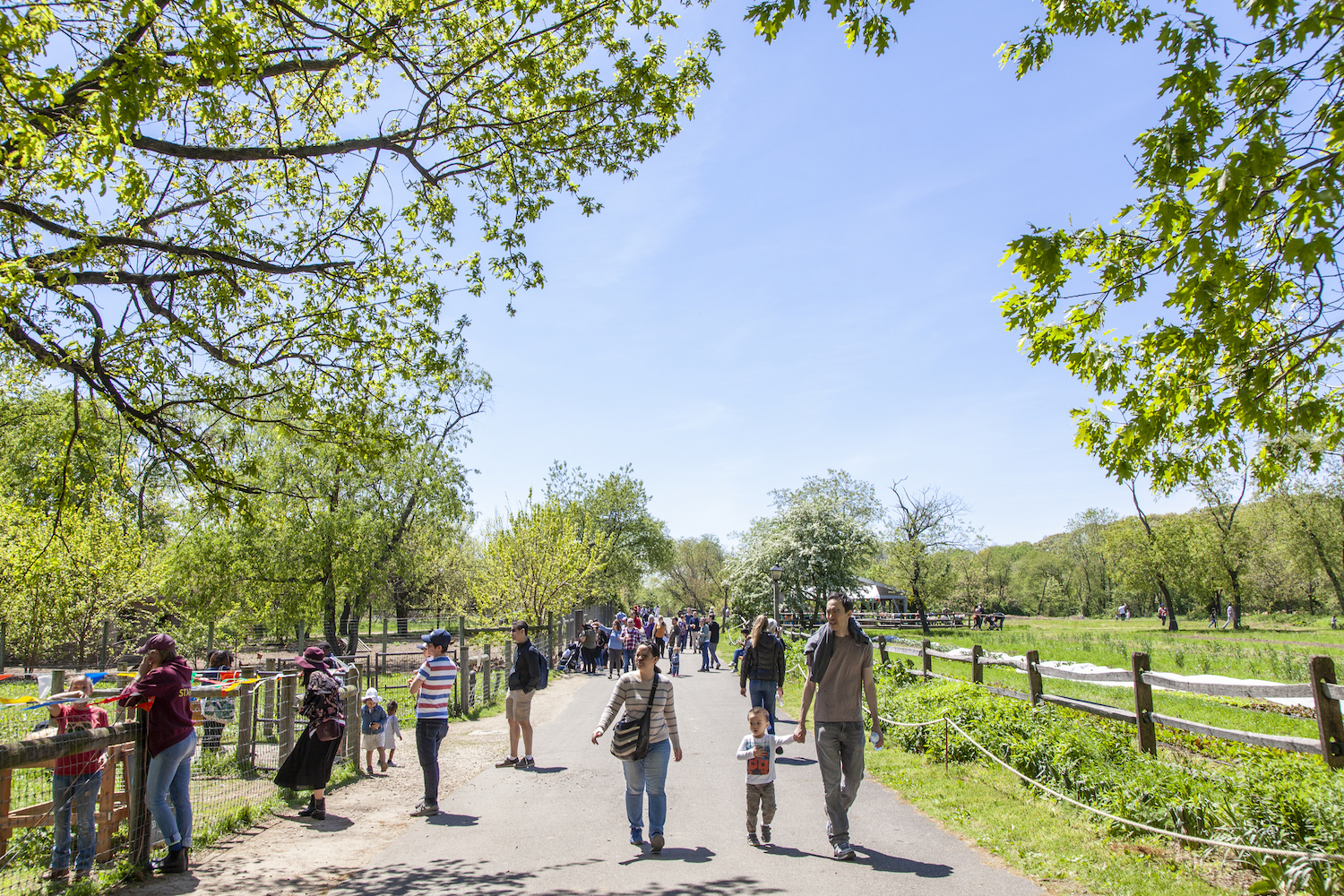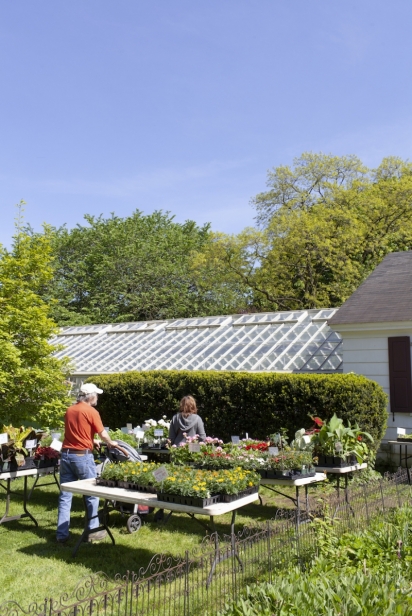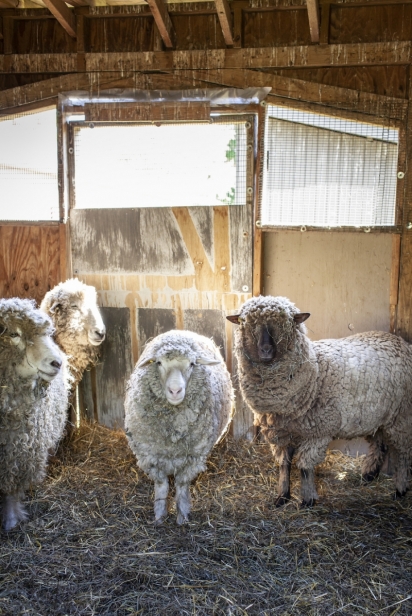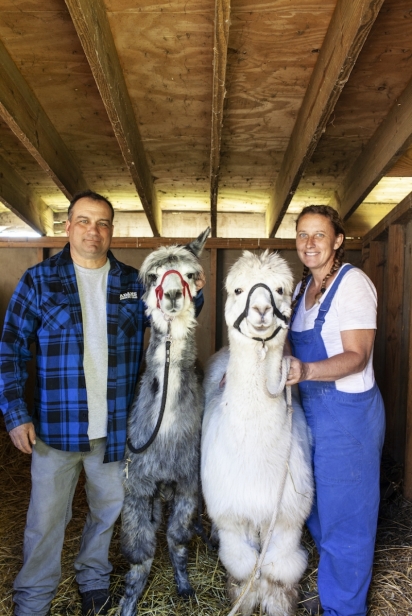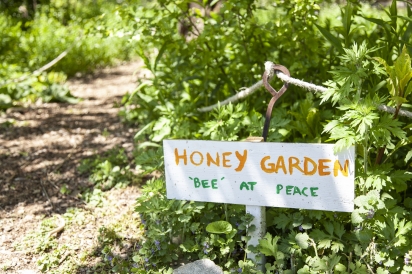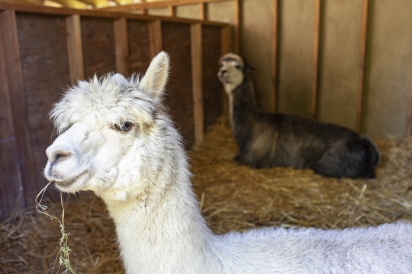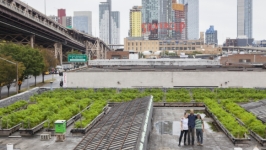Queens County Farm Museum
The alpacas see you before you see them. Their cottony heads bounce above the shrubs, bounding with their goat friends towards you and your clutch of alfalfa feed. Grazing beside a chain link fenced basketball court (it’s still Queens, after all) is a flock of extremely fluffy sheep; they’ll soon be relieved of these coats at the annual Sheep Shearing Festival, their wool spun into yarn and sold in the gift shop. Bees buzz industriously at a small complex of hives; the fruit of their labor will also be available, in jars, at the shop, alongside fast-selling fresh eggs from the husky hens in fine feather mere feet away.
Queens has deep farming roots, stretching back to its 17th century establishment. Even after 1850s urbanization, some 2,800 farms were sprouting in New York City at the dawn of the 20th century; there were still around 300 when a certain president was born here. But today, the Queens County Farm Museum is the city’s last remaining working historical farm, selling vegetables, flowers and herbs to local restaurants and farmers markets. The 47-acre site has been farmed since 1697, making it the oldest continuously run farm in the state.
The farm provides a slice of a simpler time year-round, from winter wreath making to pie eating and pig races at the summer county fair, and the popular pumpkin patch and massive corn maze in the fall. It’s also host to New York City’s largest powwow—three days of Native American dance competitions, with representation by over 40 native nations.
It not only harkens back to the city’s agrarian history, but points to a more sustainable future. “Queens Farm, now as an urban farm, is helping New Yorkers close the gap between farm and fork,” said Executive Director Jennifer Walden Weprin.
The farm’s growing and selling activities expanded around 2009, boosted by the farm-to-table movement; it’s since developed a composting program and an education program that gives 130,000 school visitors a glimpse of where their food comes from, instilling a taste for local, organic produce—and a greater consideration for the earth—in the next generation. For adults, classes on topics like foraging, preserving and canning and medicinal and cosmetic herb uses provide ideas on how to live a more healthful, less wasteful, closer-to-nature way.
With a Jamaica Hospital partnership that brings much-needed fresh produce to that food desert, as well as a collaboration with local chef/TV personality Tamara Reynolds creating farm-to-table events on-site, the farm is planting seeds for future New Yorkers to enjoy.
LOCAL TASTE: A BUDDING INDUSTRY
American horticulture’s first flowering was in Queens, decades before this country’s birth. Prince Nursery, America’s first commercial nursery, was opened in Flushing in 1737 by William Prince, a descendant of a Plymouth colony governor. For 130 years, four generations of Princes imported European plants and sent American plants abroad. The nursery produced the first catalog of plants at a time when most Americans were still subsistence farming. The size and diversity of their offerings were renowned; customers included Thomas Jefferson, George Washington and Lewis and Clark. The largest supplier of fruit trees and grapes in the New World, the nursery hoped to make the nascent country a self-sufficient fruit producer.
Sheep Shearing Festival
Queens County Farm Museum | @queensfarm
Tamara Reynolds | @vanalstreetkitchen


